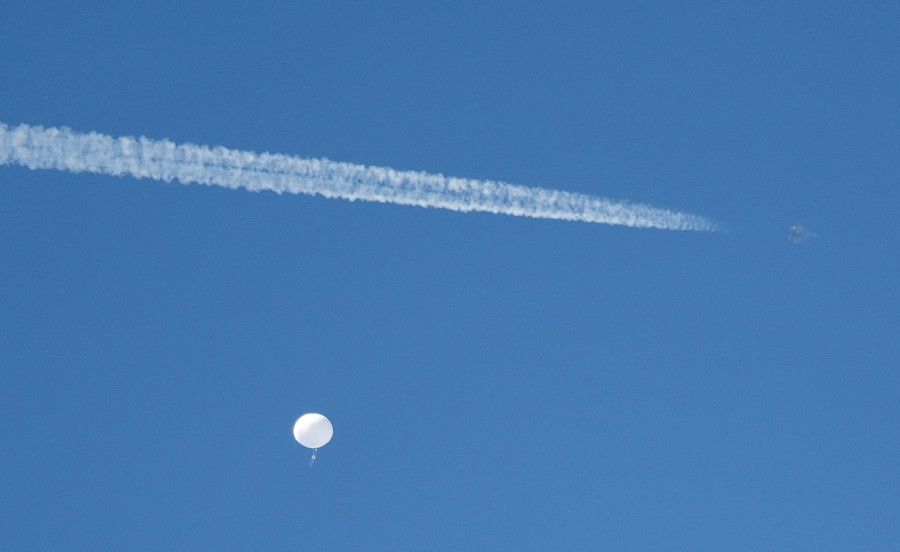China's military-civil fusion promotes militarisation of meteorological balloons
Japanese academic Masaaki Yatsuzuka finds China's explanations and criticism of the US in the aftermath of the balloon incident unpersuasive, more so in light of its military-civilian fusion strategy.

The US military's shooting down of a Chinese high-altitude balloon that had entered US airspace has attracted international attention. The incident also led to the cancellation of US Secretary of State Antony J. Blinken's visit to China, which may have implications for the future of US-China relations. The balloon's flight sparked a fierce backlash from the US, perhaps because it symbolised an escalation of China's external intelligence activities and intelligence-gathering.
...several Japanese senior officials have indicated that they will not rule out the option of shooting down a balloon should a similar incident occur in the future.
The balloon incident is expected to have ripple effects beyond the US-China relationship. Similar balloons have appeared in the sky above Japan in 2020 and 2021. At that time, the Japanese Self-Defense Forces (JSDF), unlike the US military, simply monitored them with vigilance.
However, in response to the US military's actions, several Japanese senior officials have indicated that they will not rule out the option of shooting down a balloon should a similar incident occur in the future. Similar balloons have been observed around the world, and international reactions to balloons flying into a country's airspace are certain to become even more severe in the future.

The Ministry of Foreign Affairs of China described the balloon as privately owned and used for meteorological research, criticising the US for overreacting. Still, it is a violation of international law for an aircraft to enter the airspace of another country without permission. In addition, even if it is a research balloon of a private company, this balloon was not equipped with ADS-B (Automatic Dependent Surveillance-Broadcast), which is widely used in the private sector, and its location was unknown, which raises doubts about this explanation.
The essential cause of the international community's skepticism of the Chinese government's explanation lies in China's strategy of military-civilian fusion.
Moreover, Chinese media reported that the People's Liberation Army of China (PLA) shot down a reconnaissance balloon in 2019, and so the US reaction hardly seems disproportionate. In light of these facts, China's explanations and criticism of the US are not persuasive.
China's military-civilian fusion strategy questioned
The essential cause of the international community's skepticism of the Chinese government's explanation lies in China's strategy of military-civilian fusion. China has been pursuing this strategy since 2015, stepping up the mobilisation of local governments and private companies to advance the military use of advanced technologies.
As new technologies continually change society, the military use of advanced technologies possessed by private companies is a topic being discussed in Japan and Western countries as well. But the key difference from these democratic countries is that in the case of China, the government applies its authority to a considerable extent in the consensus-building of each actor, including the government, corporations and scientists, thus semi-forcibly mobilising society's resources in a process that lacks transparency.

China's strategy of military-civilian fusion extends to numerous sectors of society, and meteorological information is no exception. An official document related to this strategy also calls for expanding the military use of meteorological data. In fact, the military-civilian fusion innovation model areas in China include the current development of a military reconnaissance surveillance system to be mounted on balloons. Considering this, it cannot be ruled out that civilian meteorological research may be used for military purposes.
It is also said that the balloon was floating at an altitude of around 20 km. In recent years, the PLA has referred to altitudes of 20-100 km as "near space", emphasising them as strategic high ground for conducting integrated operations across the land, sea, air, space and cyber domains, extending higher than the airliner routes and lower than the orbital altitudes of the low earth orbit satellites.
The only way for China to dispel the doubts of the international community is to improve the transparency of its military-civilian fusion and to offer the world a sincere explanation.
The PLA is developing not only the hypersonic glide vehicle (HGV) DF-ZF, which can travel in near space, but also aircraft that can stay in the air at low speeds, just like this balloon. PLA researchers claim that long-distance flyers may be operated as a platform to conduct early warnings, communications relay, electronic warfare and attack operations in support of joint operations.

A project team of the Australian Strategic Policy Institute (ASPI), of which I am a member, has investigated the origins of the balloon and has revealed that it bears a striking resemblance to a balloon manufactured by KuangChi Science, which is closely related to the PLA and for whose launch the Chinese Academy of Sciences was in charge. Balloons that can fly in near space for long periods of time need to consist of new materials that can withstand cosmic rays and extreme environments. A limited number of companies and research institutes, such as KuangChi Science and the Harbin Institute of Technology, are able to develop such materials, all of them closely connected with the PLA and also involved in the military-civilian fusion project.
The downed balloon has been recovered and is being investigated by the US, and it is expected that more will come to light in the future. However, as is clear from the above, even if the Chinese government's explanation that the balloon was for civilian meteorological research is true, the possibility of military use cannot be ruled out given China's military-civilian fusion strategy. The only way for China to dispel the doubts of the international community is to improve the transparency of its military-civilian fusion and to offer the world a sincere explanation.
Related: Turbulence caused by Chinese balloon set to last | The balloon is down: Whither US-China relations now? | Is the US in hysterics over a Chinese balloon? | A Chinese balloon derails US-China rapprochement | The rapid rise of 'the cosmos club' in the Xi Jinping era: Countdown to the 20th Party Congress | Prominent PLA elites in 'the cosmos club': Countdown to the 20th Party Congress





